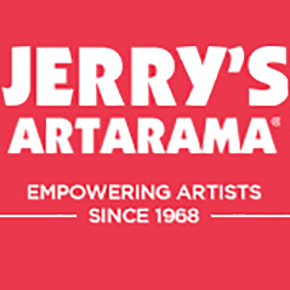The tactics needed for marketing art and elevating your creative practice are different for every person. A one-size-fits-all guide that runs through the usual art marketing, eCommerce, website, social media, email, legal, and contract strategies may offer helpful components, but isn’t applicable to everyone. This is because artists and crafters come from so many varieties of experience, socioeconomic backgrounds, disabilities, and adversities to overcome. Express your unique visual art practice with help from Side Arts’ representation and custom visual artist certified one-sheets.
Marketing Art: A Fresh Approach
- Understand your instincts
- Define your motivation
- Set positive goals
- Develop a process
- Scale your efforts
- Analyze your results
- Network for opportunities
1. Understand Your Instincts
What is common in all artists’ journeys is that you FEEL a certain way about implementing these strategies. This is something that CAN be managed and adapted to having a positive experience with marketing art.
So rather than talking about the latest social media strategy, let’s start talking about how you feel about using social media to promote your artwork. Whether you are a digital native or technophobe, your instincts are at the core of how you use platforms to promote your work.
Being a digital native may lend to being over-confident about the potential results. Being a technophobe may undervalue what can be accomplished. It’s best to try to be somewhere in between. Here, it helps to be rational:
- You don’t know what you can do until you try.
- Even the smallest results can be a step in the right direction.
- Be exact and truthful when measuring the results.
The most important step: Before you begin to try something new or view the results of something you have tried, 1) imagine a realistic positive result, 2) remind yourself to accept whatever the results are, and 3) commit to learning something from them. This will help put you in the right mindset to try the next positive step forward for your creative practice.
2. Define Your Motivation
The best question you can ask is, “Why?” It’s a question that children learn early. They are relentless with it! Their young minds are processing so much information. Ours are, too, although we often don’t have the patience or time to work through the reasons. It’s important to keep asking why.
The Five Whys
Ask yourself: Why do you want to create and sell your artwork? Then, ask why you gave that response, then ask why again, and again, and again. Ask yourself why five times to get to the heart of the matter. It’s challenging to be that honest with yourself, but you may discover something important that you hadn’t realized before. This can help inform your creative practice in new ways.
Why can be a tough question to answer. If you’re having trouble getting to the root of the matter, try reframing the question with “What…” Such as, “What is it about this type of art that inspires me.”
The Money Issue
I know. I know. We all want to make money. Some of us more than others, and that’s okay, that’s your right. The important thing to realize is that money is the by-product (rather than the purpose) of a transaction. The transaction is what is important. You have something and someone else sees the value in it. Therefore, the transaction is an item exchanged for validation. How much money is assigned to that validation is an abstract construct.
What Is Your Motivation?
Ask yourself: What do you have to offer and what type of validation are you seeking? It is important to know the answers to these questions so that you know what and when you have accomplished something. You’ll be able to state your accomplishments clearly.
3. Set Positive Goals
Goals are important because they help you understand the work you have accomplished and provide direction for your next steps. How often have you said to yourself, “I just don’t know what to do next?!” The first step in answering that question is looking back to what you have already done.
Try making a list first. Break the list into two columns. One column for things you have tried which have worked and another column for things that haven’t worked or yielded any results. Put this list somewhere you can see it every day. Make a commitment to stop doing things that you know don’t work and start doing more of what is working.
SMART Goals
SMART goals are defined as Specific, Measurable, Attainable, Relevant, and Time-bound. Focus first on things that are working (80% of your time) and then on new things that you have not tried before (20% of your time).
Examples:
- Send out two email newsletters within the next four weeks. Try Madmimi, Mailchimp, or Constant Contact. Focus each on a new piece of work with a description and call to action to purchase.
- Sign up for a social media platform which you are not currently using (i.e. Tiktok). Post four pieces of content within the next week and measure engagement.
- Review your Google Analytics account for your website. Identify the pages which have the most visits. Update and/or republish these pages with new or additional content within the next week.
- Increase your email list by 20% in the next 6 months.
- Increase your sales by 10% in the next 3 months.
Projected and Stretch Goals
For each goal (try only one at a time), set a projected and stretch goal.
Projected goals are those based on past data. For example, if you normally attain 5 new facebook followers a month, try changing how and when you post and see if you get 7 new followers each month for the next few months.
Stretch goals go beyond your average projections, but not too far (add 10%)! Using the same example as above, try for 10 new followers per month.
Compare Yourself To Yourself
It’s easy to look at others with massive followings and sales and become discouraged. Remind yourself that they started out with zero followers at one point. Rather than comparing yourself to others, look at what you have been able to accomplish. You might be surprised that the difference in results from this year to last are extraordinary compared to the results from five years ago.
Remember to celebrate the small victories. They add up! This might be a good opportunity to spend some time checking your feelings. Review what you have accomplished so far and how they relate to your motivation. Update your list of things you have tried. Having trouble getting motivated? Try these productivity tools.
4. Develop A Process
There is no set path for marketing art as a visual artist, but there is a standard journey for customers. For the purpose of this guide, customers may be clients, patrons, buyers, gallerists, curators, or commissioners.
Attract, Engage, Delight
To attract an audience, you’ll need to put yourself where they are. Everyone consumes information differently and has preferences as to how they want to be contacted. Most are best reached by email. But before you get their email address, you may need to publish content on Instagram, TikTok, YouTube, or your own website.
Go where you think your audience is. If you paint, go where people expect paintings. If your paintings are about environmental issues, go where people expect to talk about environmental issues. Think broadly about your audience and their various preferences.
Engage with your audience. Educate them about why you do what you do and how you do it. This is more than a picture and one word description. There are so many ways to engage with your audience. Make a list that feels authentic to you and narrow that list down to three to five items. Use these consistently.
Artist engagement
- Show works in progress step by step
- Write a story and rationale for each piece made
- Do product reviews and demonstrations
- Film short videos of works of progress
- Studio selfies!
- Provide lifestyle stories, tell who you are outside the studio
Give your audience a delight that will have them sharing the experience with their friends. This may include:
- Personalized notes with each purchase
- Mini-print contests
- Fan appreciation give-aways
- Take your packaging to the next level
- Thank customers for at-home pictures of your work
Engagement Funnel
All of the above components fit within a art marketing engagement funnel. Think of it as a big letter “V” where the top is how customers find out about you and the bottom is making a sale. Not everyone gets all the way through the funnel. It is important that the top of the funnel is continuously fed with new people. Most funnels are structured from top to bottom like this:
- Social media – introduction
- Website – education
- Email – owned communication channel
- Purchase – validation
Once someone has gone through the funnel, they are likely to go through again. Encourage the process by acquiring testimonials and referrals. This provides additional content to promote and new people being fed into the top.
5. Scale Your Efforts
Once you know what is working, there are a number of ways in which you can increase your artwork marketing momentum. You may want to try repurposing content, paid media ads, and alternate art sales channels.
Repurpose content
Take the communication you have already developed and repackage it in a new way. These can be used for both engagement initiatives and value add sales applications.
- Create an ebook or art book out of your works in progress and final exhibit / at home images.
- Teach a class about your process
- Offer an instructional manual
- Offer special commissions based on current works
- Create monthly patron or student webinars
- Launch a podcast series (limited or on-going)
The key to success is using information and content that you already have with an established audience. They are likely to share with their networks and increase your visibility.
Paid media ads
Ads are most effective when they promote content that is already successful. Always point ads to your educational materials, rather than at a sales page. In turn, the educational material should offer a call to action that leads to your sales page. One way to think about this: “you have to ask me out on a date before you ask me to marry you.”
Value Add Applications For Marketing Art
You can obtain more information that informs your strategy of marketing art by participating in a variety of events. Getting live interaction directly from the source provides the best feedback. Remember that it is not just what they say, but what they do and how they do it that is important to recognize.
Other than direct art sales, consider participating in:
- Requests for proposals
- Grants
- Vendor events
- Platform sales
- Licensing
- Exhibitions
- Competition
Click here for more information on each of the art sales channels. You won’t know what works best unless you give it a try. Do what is best for your creative practice, time, budget, and community.
6. Analyze Your Results
Take a break, at least once a month, to look at some of the data you have gathered. You may learn something new about what works, when to do something, and who to focus on. It’s easy to look at the data and move on, but it’s more important to make a commitment to make the small changes it suggests.
If you have your own website, set up Google Analytics. It will help you understand what pages get the most traffic and where the traffic comes from. You can determine which pages to target for ads and which sources generate more leads.
Almost all social media platforms offer some analytic data on your account. On these accounts, it’s most important to make adjustments in terms of who is visiting and when.
When using email marketing platforms, like MadMimi, Mailchimp, and Constant Contact, keep track of how many people are on your list, what percent open your emails, and what percent click through from content in your emails to your links. Change the content and / or formatting of your emails based on the highest open and click through rates.
Remember to look back on data from a year or more back to see how much your creative practice has grown. Take a moment to reflect on how you feel about these changes. Are you comfortable with what you have done? Do you feel you need to be more proactive? It might be time to revisit your SMART goals, both projected and stretch. What, if anything, do you want to do differently? Make a commitment, write it down, and plan your changes.
7. Network For Opportunities
If you want your strategy for marketing art to elevate to the next level, then network for opportunities. Many artists have similar opportunities when it comes to setting up their creative practice. There are free website hosting services and website templates, social media platforms with analytics, Google Analytics data, Google suite for managing content, and scalable email marketing platforms. All of these are available and mostly accessible to artists and crafters equally.
Personal networks are unique to each individual. These relationships should be fostered with care. There are many ways to do so.
- Collect email addresses from anyone that seems interested in your artwork
- Connect with your contacts on LinkedIn
- Search for and connect with 2nd degree connections on LinkedIn that may have similar interests
- Volunteer at trade shows, exhibitions, and art and craft fairs
- Join a professional association in your field of interest
- Attend meet-ups
- Get Certified with Side Arts and join your local artist registries
Have a few high net worth contacts already? Ask them out for coffee once every six months. Set up a recurring reminder on Google calendar for each individual. Keep a few personal notes on each contact. Besides art, what are their other personal interests? You’ll have some easy talking points for each conversation. Ask how you can help them before asking for help yourself.
Marketing Art Strategy Conclusion
Try thinking about your strategy for marketing art as a process of deliberate practice. It’s not about doing the same thing on repeat, but understanding your feelings and motivations, focusing on SMART Goals, and making adaptations. That hard thing is sticking with something that may feel uncomfortable at first or making a change the data supports which goes against your preconceived notions. Small steps first.
Next Step
Are you ready to invest in yourself and showcase your artwork? Apply to become represented by Side Arts, a leading agency connecting artists with exhibition opportunities. With limited capacity and a rigorous jury review, Side Arts ensures that your work gets the attention it deserves. Click here to learn more about how Side Arts can elevate your art career and provide you with exciting opportunities to display your talent to a wider audience.
Take the leap and step into a world of endless possibilities for your artistic journey with Side Arts. Don’t miss out on this incredible chance to share your passion and creativity with the world. Apply now and open doors to a bright future as a recognized visual artist. Click here to apply.
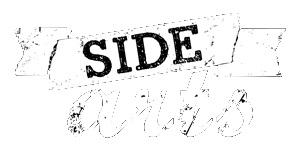
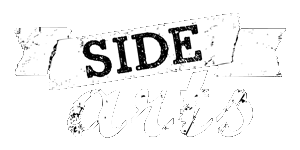
![Listing Content Changes [Write A Call For Artists] Listing Content Changes [Write A Call For Artists]](https://sidearts.com/wp-content/uploads/2020/02/How-To-Guide.png)
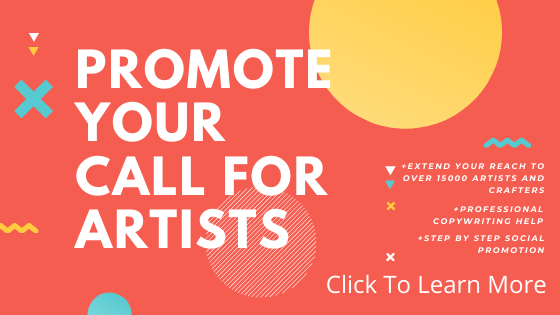
![Roy Wronker [Certified Visual Artist – Johns Creek, GA] Roy Wronker [Certified Visual Artist – Johns Creek, GA]](https://sidearts.com/wp-content/uploads/2024/03/1-768x768.png)
![Roy Wronker [Certified Visual Artist - Johns Creek, GA]](https://sidearts.com/wp-content/uploads/2024/03/2.png)
![Roy Wronker [Certified Visual Artist - Johns Creek, GA]](https://sidearts.com/wp-content/uploads/2024/03/3.png)
![Linda Fitzgerald [Certified Visual Artist – Fort Collins, CO] Linda Fitzgerald [Certified Visual Artist – Fort Collins, CO]](https://sidearts.com/wp-content/uploads/2023/03/1-768x768.png)
![Linda Fitzgerald [Certified Visual Artist - Fort Collins, CO]](https://sidearts.com/wp-content/uploads/2023/03/2.png)
![Linda Fitzgerald [Certified Visual Artist - Fort Collins, CO]](https://sidearts.com/wp-content/uploads/2023/03/3.png)
![Marketing Art: A Fresh Approach [Official Guide] Marketing Art: A Fresh Approach [Official Guide]](https://sidearts.com/wp-content/uploads/2020/02/Marketing-Art.png)
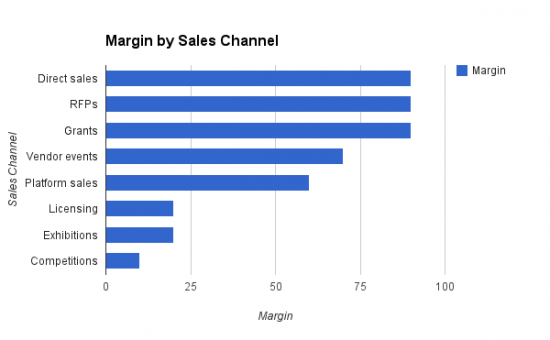
![Linda Dubin Garfield [Certified Visual Artist – Bala Cynwyd, PA] Linda Dubin Garfield [Certified Visual Artist – Bala Cynwyd, PA]](https://sidearts.com/wp-content/uploads/2021/01/1-768x768.png)



![Lori Ellsworth [Certified Visual Artist -South Lyon, MI] Lori Ellsworth [Certified Visual Artist -South Lyon, MI]](https://sidearts.com/wp-content/uploads/2024/01/1-1-768x768.png)
![Lori Ellsworth [Certified Visual Artist -South Lyon, MI]](https://sidearts.com/wp-content/uploads/2024/01/2-1.png)
![Lori Ellsworth [Certified Visual Artist -South Lyon, MI]](https://sidearts.com/wp-content/uploads/2024/01/3-1.png)
